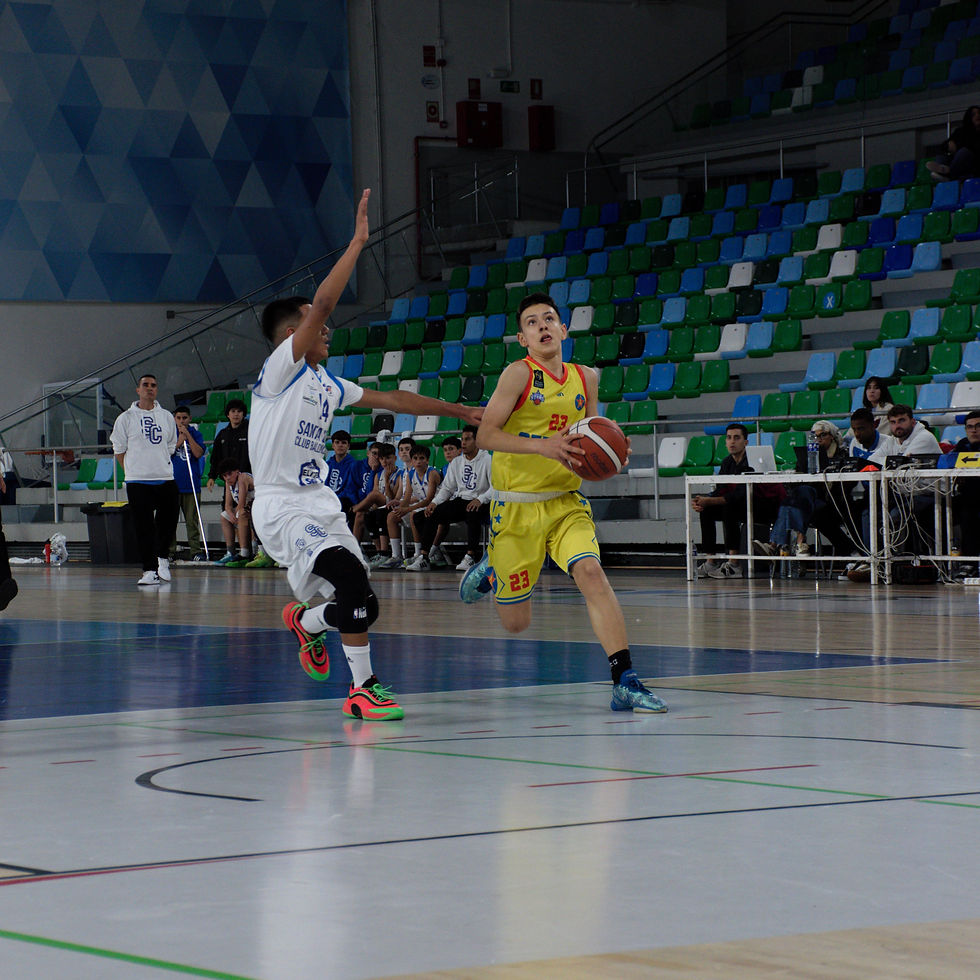🏀 The Power of Body Language in Basketball: How Nonverbal Communication Can Win Games
- Alexandru Ciobanu

- Apr 4
- 3 min read
Updated: Aug 1
In basketball, it's not just the scoreboard that counts. From intense eye contact to confident posture, nonverbal communication can shape the momentum of a game—and sometimes, decide the outcome. In this article, we explore how body language in basketball influences performance, teamwork, and mindset, both on and off the court.
👀 Facial Expressions: When Your Face Says It All
Facial expressions are the first indicators of a player’s mental state. A fierce glare can intimidate opponents, while a smile - even a forced one - can hide frustration.
A locked-in stare sends a message: "I'm here to win."
Rolling your eyes or putting your hands on your head after a miss? That’s a mental win for the opponent.
Players like Michael Jordan mastered the art of expression—his look alone could flip the energy of a game.
Coaches and teammates read facial cues to assess focus, confidence, and emotional control. A subtle smile after a great pass or a clenched jaw after a mistake can tell a deeper story than words ever could.
🏀 “Basketball is a game of emotions. If you can’t control your facial expressions, opponents will use them against you.” – Kobe Bryant
💪 Posture & Body Language: Step Onto the Court Like a Champion
Your posture speaks before you say a word. The way you walk, stand, and move communicates confidence or a lack of it.
Upright posture + steady stride = mental edge
Slouched shoulders + head down = vulnerability
Think of LeBron James entering the court: chest out, eyes forward, fully in control. It’s a silent message to everyone watching: “I own this space.”
In defense, posture becomes a weapon. Players ready to react stand in a low stance with arms extended. Those who stand flat-footed signal weakness.
🏀 “When you step on the court, you have to look like you’re ready to dominate. Even when you’re not sure—act like you are.” – Michael Jordan
🔄 Eye Contact: The Underrated Superpower
One look can set a play in motion. Eye contact builds chemistry, sharpens intuition, and enhances strategy.
Quick glances between teammates = seamless coordination
Avoiding eye contact = nervousness, disengagement
A great point guard reads not just the court but also the eyes of teammates. A lifted brow or wide eyes might be all it takes to initiate a move.
🏀 “A good basketball player sees the court. A great one sees their teammates’ eyes too.” – Magic Johnson
✋ Hand Gestures: Silent Signals That Speak Volumes
Gestures in basketball aren’t just for style, they’re strategic.
Raised fist = “Get ready to defend!”
Open palm = “Stay calm, we’ve got time.”
Pat on the back = “Great job, I see you.”
From calling plays to offering support, hand gestures build trust and pace. But beware of negative gestures like arm-flailing or towel-throwing, these kill team spirit fast.
🏀 “Sometimes the best coach doesn’t say a word. They just raise a hand and the team knows what to do.” – Gregg Popovich
🧠 Coach’s Body Language: Leadership Without Words
Great coaches don’t just yell, they communicate silently with posture, presence, and facial control.
Calm demeanor = emotional stability for the team
Nervous pacing or exaggerated reactions = transfer of anxiety to players
Legendary coaching examples:
Phil Jackson – Zen calm, even in chaos
Gregg Popovich – The stare that said it all
Pat Riley – Commanding respect with posture alone
🏀 “A coach must be a model of emotional control. Your team will reflect the energy you give off.” – Phil Jackson
🎯 Final Thoughts: Mastering Nonverbal Language in Basketball
Basketball is a language and body language is its strongest dialect. Words matter, but when the crowd is loud and the game is tight, how you move, look, and act is what truly communicates strength and unity.
To level up your game:
✅ Control your facial expressions
✅ Walk with purpose
✅ Make meaningful eye contact
✅ Use positive hand gestures
✅ Model confidence—whether you're a player or a coach
Basketball isn’t just about scoring. It’s about how you react, how you lead, and how you connect without saying a word.

















Comments